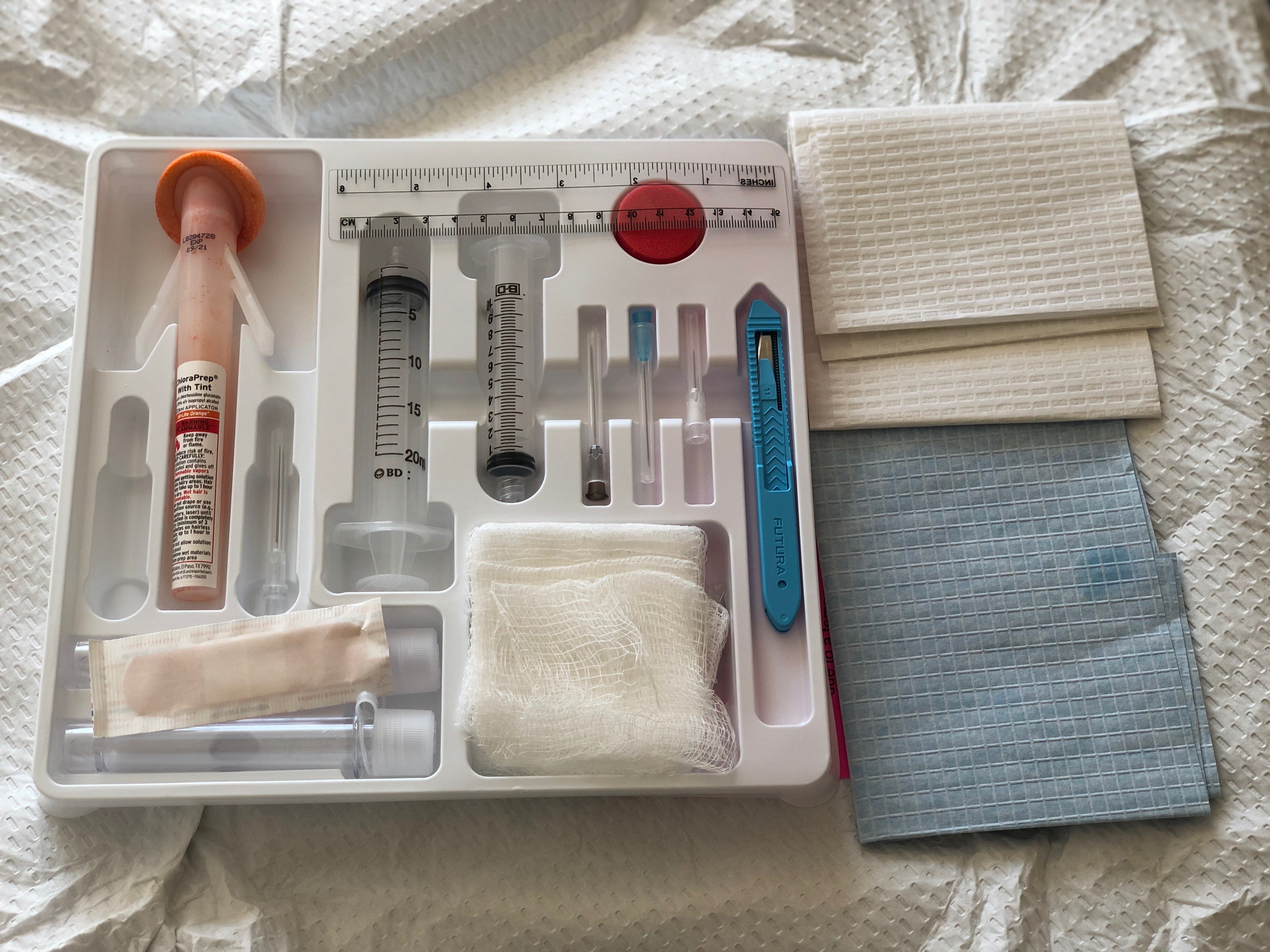OVERVIEW
Before the start of any procedure it is useful to be aware of what equipment will be required to perform the procedure. This helps ensure that all required equipment is present at the start of the case, and that the operator is not caught off guard during the case. A paracentesis is no exception, and this page helps explain what type of procedural equipment is required prior to the start of the paracentesis.

DISCLAIMER: THE EQUIPMENT USED IS VARIABLE
It is important to appreciate that the type of equipment that is used for a paracentesis procedure can be variable depending upon the practice patterns of the operator and what is available in the care setting. Certain kits are often used which include many of the items listed below (such as drapes, syringes, needles). Here are some examples:
- Soft tissue biopsy kit: this kit includes a prep stick, drapes, syringes, needles, and a few other useful things needed to perform biopsies, but it is also useful for conducting a paracentesis.
UNIVERSALLY USED EQUIPMENT FOR A PARACENTESIS:
This section tries to outline the items that are universally needed for paracentesis. They are organized by section.
Scanning the patient for ascites:
- Ultrasound machine
- Curved probe
- Linear probe
- Skin marker (non-sterile)
Materials for prep:
- Sterilizing prep stick: such as a Chloraprep stick to sterilize the procedural site
- Skin drapes/sterile towels: to drape the procedural site.
- Sterile ultrasound probe cover (optional): only needed if performing the paracentesis under direct ultrasound guidance
Starting the case:
- Sterile skin marker (if needed): can be used to alter puncture site if re-assessing with procedural ultrasound
- Lidocaine (1%, buffered if available): to numb the skin/subcutaneous tissues/peritoneum
- 10 ml syringe: to use for lidocaine
- 19/18 gauge needle (often filtered): this is used for drawing up the lidocaine
- 25 gauge needle: used to administer the lidocaine
- Scalpel (if desired): to make a dermatotomy if desired
Draining the ascites:
- Drainage catheter with needle (such as a Yueh needle): this will be used to access and drain the ascites
- 20 ml syringe: this will be used with the drainage catheter/needle to drain the ascites initially
Materials for diagnostic paracentesis (if performing):
- Extra empty syringes (20 ml, 60 ml): the volume and number of these additional extra syringes will depend on how much sample will be taken for diagnostic purposes. The bottom line is to have some empty syringes so that enough ascites sample can be collected.
- Blood transfer device holder or 19 gauge needle (sterile, unused): this can be used for spiking culture or lab sample vials/bottles.
- Culture bottles (if sending sample for culture
- Lab chemistry vials: make sure whichever labs will be sent have the appropriate collection vials that you will spike with the ascites fluid
Materials for large volume/therapeutic paracentesis (if performing):
- IV extension tubing: this will be used to connect the drainage catheter with
- Large volume vacuum collection bottles: these will be used to collect the ascites
- Sterile tegaderm/tape (if desired): to secure the drainage catheter in place during the large volume paracentesis
End of the case:
- Bandaid/dressing supplies: whatever will be used to cover the entry site for the paracentesis. Often times a small bandaid is used, however a tegaderm and gauze can also be used.
Page Updated: 09.19.2019